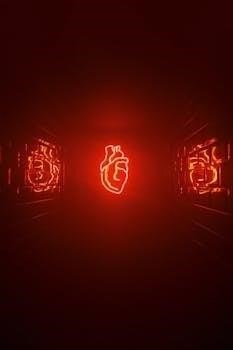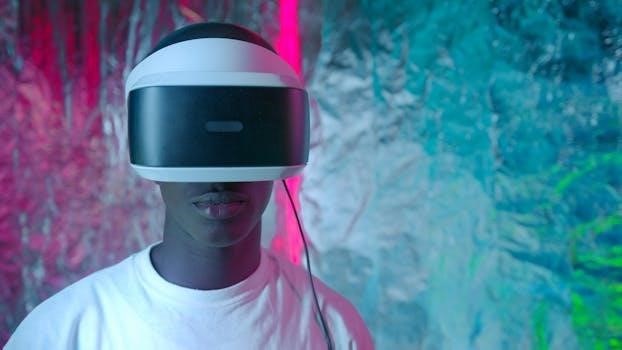Guide for Mirror LED Strip Installation
Transform your space with stylish and well-lit mirrors by installing LED strip lights! This guide provides a step-by-step process, helping you design and install LED strip lighting behind your mirror. We will walk you through each step to ensure successful installation.

Choosing the Right Mirror and LED Strips
Selecting the appropriate mirror and LED strips is crucial for achieving your desired lighting effect. Consider the size and shape of your mirror, and whether it has a frame or is frameless. For framed mirrors, the installation process differs slightly from frameless ones.
When choosing LED strips, pay attention to their brightness, color temperature, and waterproof rating. Brighter strips are ideal for illuminating larger spaces, while warmer color temperatures create a cozy ambiance. Also, select LED strips that are specifically designed for installation around mirrors.
Consider the length of LED strip lights you’ll need based on the dimensions of your mirror. It’s better to get a longer strip that you can cut to size. Make sure to consider the voltage requirements of the LED strips and choose a compatible power supply. Also, check the strips’ adhesive backing or mounting options.
Selecting the right mirror and LED strips will set the stage for a professional and visually appealing lighting upgrade. Remember to consider the overall style and functionality you want to achieve with your mirror lighting.
Cleaning the Mirror Surface
Before you begin mounting your LED strips, thoroughly cleaning the mirror surface is an absolutely essential step. This ensures optimal adhesion and a long-lasting, professional-looking installation. Dust, dirt, and grime can prevent the adhesive backing of the LED strips from sticking properly, leading to peeling or falling off over time.
Begin by wiping down the mirror surface with a soft, lint-free cloth to remove any loose debris. Then, use a glass cleaner or a mixture of water and vinegar to thoroughly clean the entire area where the LED strips will be mounted. Ensure to clean the area surrounding the mirror.
Pay special attention to the edges and corners, as these areas tend to accumulate more dirt. After cleaning, dry the mirror surface completely with a clean, dry cloth. Make sure there is no moisture left behind, as this can also affect the adhesion of the LED strips. For best results, allow the mirror to air dry for a few minutes before proceeding to the next step.
By taking the time to properly clean the mirror surface, you’ll create a strong, secure bond between the LED strips and the mirror, ensuring a beautiful and long-lasting lighting effect.
Mounting Options for LED Strips
When installing LED strip lights around a mirror, you have several mounting options to consider, each offering a unique aesthetic and level of ease. The best choice depends on your mirror’s design, desired lighting effect, and personal preference. One popular method is to directly adhere the LED strips to the back of the mirror using their adhesive backing. Ensure the surface is clean for optimal adhesion.
Alternatively, you can use mounting clips or brackets for added security, especially in high-humidity environments. These clips provide extra support and prevent the strips from sagging over time.
For frameless mirrors, consider using spacers or mounting bars to create a gap between the mirror and the wall. This allows the light to diffuse evenly, creating a soft, ambient glow. Glue the mounting bars or spacers to the back of the mirror using glass glue, silicone-based glue, or an all-purpose super glue.
If your mirror has a frame, you can install the LED strips on the back of the frame, either along the inner edge or the outer edge, depending on the desired effect. Each mounting option can vary the lighting effect.
Installation on Framed Mirrors
Installing LED strip lights on framed mirrors offers a straightforward approach, especially if the frame has a flat surface. Begin by assessing the frame’s structure. If the frame has an inner edge, you can install the LED strips along this edge, directing the light inward towards the mirror’s surface. This creates a focused and direct illumination, ideal for tasks like applying makeup or shaving.
Alternatively, you can mount the LED strips on the back of the frame, facing outward. This will produce a halo effect, casting a soft glow onto the surrounding wall. Ensure that the LED strips are positioned evenly to achieve a balanced lighting effect.
Before adhering the LED strips, thoroughly clean the frame’s surface with isopropyl alcohol to remove any dust or grease. This will ensure a strong and lasting bond. Carefully peel off the adhesive backing from the LED strip and press it firmly onto the frame. Use mounting clips for additional support, especially in areas prone to moisture.

If your mirror is flat-framed, you can install LED strips above the frame.
Installation on Frameless Mirrors (Using Spacers)
Frameless mirrors present a unique challenge for LED strip installation, as they lack an existing frame for mounting. To overcome this, spacers are essential for creating the necessary gap between the mirror and the wall, allowing the LED light to diffuse effectively.
Begin by selecting appropriate spacers. These can be small blocks of wood, plastic, or specialized mounting bars designed for LED strip installation. Ensure the spacers are of uniform thickness to maintain a consistent distance between the mirror and the wall. The thickness of the spacers will determine the intensity and spread of the light.
Attach the spacers to the back of the mirror using a strong adhesive suitable for glass, such as glass glue or silicone-based adhesive. Apply the adhesive generously to ensure a secure bond. Allow the adhesive to cure completely according to the manufacturer’s instructions before proceeding.
Once the spacers are firmly attached, carefully adhere the LED strips to the back of the mirror, positioning them along the edges. Ensure the strips are evenly spaced to achieve a balanced lighting effect. Connect the power supply and test the lights before permanently mounting the mirror to the wall. Secure the mirror to the wall using appropriate mounting hardware, ensuring it is level and stable.
Connecting the Power Supply
Connecting the power supply to your LED strip lights is a crucial step in the installation process. Ensuring a secure and correct connection is vital for the lights to function properly and safely. Begin by identifying the power input terminals on your LED strip. These are typically marked with “+” and “-” symbols, indicating positive and negative polarity.

Next, examine your power supply. It should have corresponding output terminals, also marked with “+” and “-“. Match the polarity of the power supply to the LED strip, connecting the positive terminal of the power supply to the positive terminal of the LED strip and the negative terminal to the negative terminal. Incorrect polarity can damage the LED strip or the power supply.
For a secure connection, use wire connectors or solder the wires together. If soldering, ensure the solder joints are clean and free of any loose strands. Insulate the connections with electrical tape or heat shrink tubing to prevent short circuits. If using wire connectors, ensure they are properly sized for the gauge of the wire and that the connections are tight.
Before plugging the power supply into an outlet, double-check all connections to ensure they are secure and the polarity is correct. Once you are confident in the connections, plug in the power supply and test the LED strip lights.
Testing the LED Strip Lights
After connecting the power supply, testing the LED strip lights is essential to confirm proper installation and functionality. Before fully mounting the mirror, this step ensures that all connections are secure and the lights are working as expected. Begin by activating the power supply. If the LED strip lights do not illuminate, immediately disconnect the power supply to prevent potential damage. Recheck all connections, paying close attention to polarity and ensuring that all wires are securely fastened.
If the lights illuminate, observe the brightness and color consistency along the entire length of the strip. Uneven brightness or color variations may indicate a faulty connection or damage to the LED strip. If you notice any inconsistencies, inspect the strip for any physical damage or loose components. Also, check the power supply to ensure it is providing the correct voltage and amperage.
Test any additional features of the LED strip, such as dimming or color-changing capabilities. Use the remote control or app to adjust the settings and verify that they function correctly. If any features are not working, consult the manufacturer’s instructions for troubleshooting tips. If all functions operate as expected, you can proceed with mounting the mirror; However, if you encounter any issues, address them before continuing to avoid potential problems later.
Achieving Different Lighting Effects
The beauty of LED strip lights lies in their versatility, allowing you to create various lighting effects to suit your preferences and needs. The way you install them greatly impacts the final ambiance. Wrapping the LED strips directly around the mirror provides a simple, even glow. For a softer, diffused light, consider placing the strips further back from the edge of the mirror, creating a halo effect. This also minimizes harsh shadows and creates a more relaxing atmosphere.
Experiment with different colors to transform your space. Warm white LEDs provide a cozy, inviting feel, while cool white LEDs offer a brighter, more modern look. RGB LED strips offer a spectrum of colors, allowing you to customize the lighting to match your mood or décor. Using a dimmer switch, adjust the brightness to create the perfect ambiance for any occasion. A brighter setting is ideal for tasks like makeup application or shaving, while a dimmed setting provides a relaxing atmosphere for a bath.
Consider using smart LED strips that can be controlled via a smartphone app or voice assistant. These strips often offer advanced features like color cycling, scene settings, and integration with other smart home devices. Ultimately, the best lighting effect depends on your personal taste and the intended use of the mirror. Don’t be afraid to experiment with different placement, colors, and brightness levels to create the perfect lighting for your space.

Cutting LED Strip Lights Correctly
When installing LED strip lights around your mirror, you might need to cut them to achieve the perfect length. Cutting LED strips is a relatively simple process, but it’s crucial to do it correctly to avoid damaging the lights. First, always unplug the LED strip from the power source before cutting. Locate the designated cutting points on the strip. These are usually marked with a scissor icon or a dotted line and are typically found every few LEDs.
Using a sharp pair of scissors, carefully cut along the designated cutting line. Ensure that you cut straight to avoid damaging the circuit. After cutting, you may need to reconnect the cut sections, especially if you are creating corners or need to extend the strip. For this, you can use solderless connectors specifically designed for LED strip lights. These connectors provide a simple and secure way to join two sections without soldering. Alternatively, you can solder the wires together for a more permanent connection.
If you choose to solder, make sure to use a low-wattage soldering iron and apply heat for a short amount of time to avoid damaging the LEDs. Always test the connection after cutting and reconnecting to ensure that all the LEDs are working properly. Remember, precision is key when cutting LED strip lights. Taking your time and following these instructions will help you achieve a professional-looking installation.

